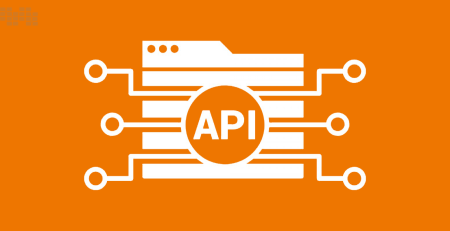API Integration
While API integrations may not receive as much attention as a programming language or software framework, they are equally important in the software development process.
So, what exactly is API integration? When it comes to software and technology, it’s best to get specific.
This article will answer the question, “What is API integration?” as well as everything else you need to know about API integrations.
What Is API Integration?
First and foremost, what exactly is an API? API stands for application programming interface. APIs are protocols that allow different software systems to communicate and share data.
For example, ask Siri or Google Assistant to play a song on your phone right now. There’s a good chance that digital voice is linked via an API to a music app on your phone that’s eager to fetch the song you requested.
This operation occurs when the API of Siri or Google Assistant interacts with the API of your music program. APIs function as software intermediaries between two or more technologies in this way.
This connection is explicitly described as ‘API integration.’ As you can see, this is a critical component of any technical endeavor.
Because software does not exist in a vacuum, the transactions that occur from one technology to the next are what make these technologies useful in the first place.
How Do API Integrations Work?
The simplest way to explain APIs is that, whereas user interfaces are designed for the user, a human being, APIs are designed for the entire application or computer.
To be more specific, the human accesses the application. In web applications, the API sits between the application and the server, responding to human users who access the application after making a specific request.
The API will ask the server to fulfil the user’s request using the predefined protocols APIs are given by definition. To put it bluntly, APIs are the software’s middlemen.
They are the waiter who takes your orders and delivers them to the kitchen, ensuring that your food is fresh and hot!
Why Are API Integrations Important?
API integrations provide modern businesses with the tools they need to succeed. Okay, so you’re not the kid behind Siri or Google Assistant, so knowing the ins and outs of API integration won’t help you there.
However, if you’re in charge of a tech startup or any other business, you’ll almost certainly come across API integrations.
HubSpot, for example, is a popular content optimization system (COS) that combines the capabilities of a CMS and a customer relationship management (CRM) tool.
Despite the fact that HubSpot is frequently compared to WordPress, HubSpot objectively provides more tooling for you to take your business to the next level, through marketing and beyond. The numerous integrations offered by HubSpot only serve to amplify this effect.
Those who still want HubSpot’s CRM but prefer WordPress can use API integrations to integrate HubSpot into their WordPress CMS.
Those who use HubSpot CMS, on the other hand, sometimes use API integrations to continue using Salesforce, a similarly popular CRM.
Of course, the value of API integrations extends far beyond HubSpot. This is merely one example.
APIs will be essential if you want to create any type of application, mobile or web. APIs for representational state transfer (REST), in particular, are critical for using networks.
5 Examples of API Integration Use Cases
Read on for more information on how API integration can benefit your business. The examples below illustrate the most common API integration use cases.
1. Connect Cloud Apps
Cloud apps are software applications in which much of the back-end technology, such as logic and data, is accessed online rather than on a local machine.
Given that Amazon Web Services (AWS), a cloud platform that provides servers, storage, networking, and other services, controls more than a third of the market, you’re probably more familiar with cloud apps than you realize. A good example of a cloud app is Google Docs.
API integrations are now the norm for connecting cloud apps. Returning to Google Docs, this is how you would combine your documentation with apps like Google Sheets, Slack, Discord, GitHub, and dozens more.
2. Creation of Custom APIs
Naturally, using pre-written APIs does not always work. Only custom software can be efficient and flexible enough to work for your project in some cases. In this case, you have the option of creating a custom API.
3. Ease the Development of Apps
APIs are, to some extent, a method of standardization. APIs serve as outlines to streamline the same process, rather than writing and rewriting code to facilitate this type of integration.
Many popular apps rely on pre-written APIs to keep everything together. API integration is a quick and easy way to combine multiple functionalities into a single high-functioning and performant app.
4. Strategic Team Movement
When building APIs from scratch isn’t profitable, software as a service (SaaS) companies can help. This is more often than not a common occurrence.
This mode of API integration can boost productivity for your team in addition to speeding up development. Accelerating the software development process is critical to releasing successful apps.
5. Multiple Services Management
Using APIs is simply easier from a management standpoint. It can be difficult to keep track of how multiple services operate and interact with one another.
A task of this nature may necessitate the participation of a large number of people drawn from various IT departments or software development teams.
It’s much easier to keep track of the pieces you put together than it is to find the ones that are strewn across your hypothetical playroom.
How To Build API Integrations
Creating an API integration is similar to creating a standard software application. It takes commitment and skill. There are four critical steps that you must consider.
Research
Any endeavor you’ve taken on wholeheartedly most likely included some research. APIs are no exception. You must first learn the fundamentals of how APIs work.
Starting with the domain where you want your API to run is a good place to start. For example, if you’re creating API integrations for web development, you should learn about REST APIs.
Prototype
The next step is to create a prototype. Prototypes have limited functionality, but they should serve as a foundation for how your API will look. This stage should not take more than a week.
Minimum Viable Product (MVP)
A MVP is the next step up from a prototype. It is a beta version of your API that you can test. This will, predictably, take longer to build than a prototype. Set aside no more than two weeks for MVP development.
Transaction Management
Transactions are used to describe an API call made on your website or application. When it comes to transaction management, your job is to figure out what to do if a transaction doesn’t go as planned. If necessary, withdraw the transaction and debug the issue.
Conclusion
Building an API is only the first step in API integration. It may also not be the simplest. APIs rely on technical knowledge to keep things running smoothly. Keep in mind that the fifth and most important step in developing API integrations is to service your integration on a regular basis.
You may have just realized that all of this is going to take a lot of effort. You are correct.
Contact Nile Bits right away if you need trained and skilled software professionals to work on your custom API integrations.













Leave a Reply